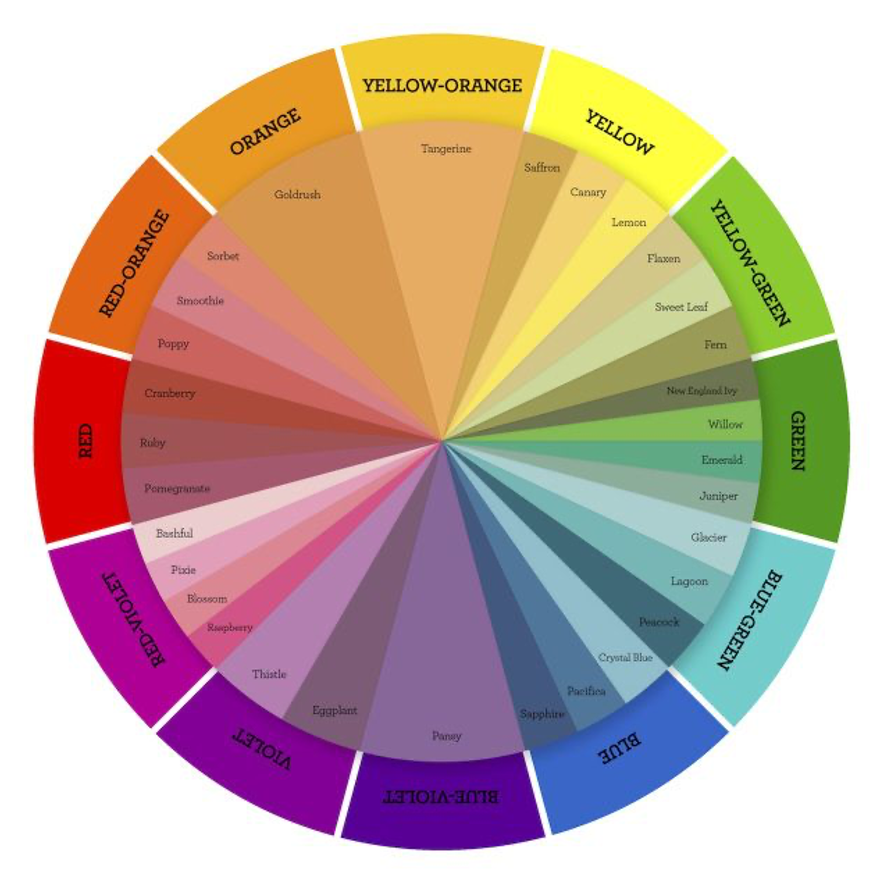Color theory
Characteristics of light sources
According to the International Lighting Vocabulary, the definition of light is: ‘Any radiation capable of causing a visual sensation directly’. Light, or visible light, is electromagnetic radiation visible to the human eye and responsible for the sense of sight.

Light is everywhere. Light is at once obvious and mysterious. We are showered with yellow sunlight during daytime, and saved from the darkness by incandescent and fluorescent lamps. We need light to see the objects sur- rounding us. It carries information from the world to our eyes and brains. Colours and shapes are indispensable parts of nature, yet light is a perplexing phenomenon when we study it more closely. The brain and eyes act together to make our visual perception extraordinary powerful. We see movies as sequences of still pictures and the pictures as arrays of dots. We catch glimpses of its nature when a sunbeam angles through a dust-filled room and when a rainbow appears after a storm.Light acts as particles that stream from a source.
Process of visual perception
Visual perception is the ability to interpret the surrounding environment by processing information that is contained in visible light. The resulting perception is also known as eyesight, sight or vision. The various physiological components of vision are referred to collectively as the visual system. All creatures have the ability to sense the surrounding world, but in various ways and degrees. We may envy the bloodhound’s exceptional nose, but humans possess visual prowess that is unsurpassed in its ability to detect and make sense of patterns (although it does not match the eagle’s sight in distance). Our eyes and brains work as a team to discover meaningful patterns that help us make sense of the world.
There are three ingredients or elements in the process of visual observation of an object as shown below They are:
• a light source
• an object
• a human observer.

The colour wheel is a more helpful model, displaying the compositional relationships between the spectral colours. Mixing any two of the primaries produces a 'secondary' colour which appears midway between them on the wheel. Further subdivisions can be created by continuing to mix adjacent colours. Opposite colours on the wheel are complementary; placed side to side, they produce a harmonious result, but mixed together, they effectively cancel out. A number of pairs of pure complementary spectral colours also exist; if mixed additively, these will produce the same sensation as white light. Among these pairs are certain yellows and blues, greens and blues, reds and greens, and greens and violets.
As well as describing colour in terms of the visible spectrum, it can be described in terms of three characteristics - hue, lightness, and saturation. Hue is the name of the colour, such as red or orange; lightness (sometimes called value) indicates the darkness or lightness of a hue in other words, how close it is to black or white; saturation (also called chroma) refers to the spectral purity of the hue, described using terms like vividness or dullness. The figure on the right shows a representation of the three variables. Hue is represented by angular position around the circle; saturation increases radially from the centre of the circle outwards; light- ness, or value, is represented by positions along the vertical scroll bar.

Tints, shades and tones
The relationship between tints, shades and tones is best explained by reference to the HLS model. The hue values range from 1"to 360"- equivalent to settings on a colour wheel where 0" is the same as 360".
Tints, shades and Tones
The hue values for primary colours are red (O"), yellow (60"), green (120"), cyan (ISO"), blue (240"), and magenta (300"). The standard setting for a hue is 50% lightness and 100% saturation. If, for example, pure red (R255, GO, BO) is highlighted in the palette, the HLS values display hue 0", lightness SO%, and saturation 100%.
The hue setting selects a starting colour value. Varying the lightness value adds a percentage of white or black to the hue. Increasing lightness adds white, producing a 'tint’ of the selected colour; decreasing lightness adds black, producing a 'shade' of the selected colour.



Color reproduction
Camera
A key element of many graphic projects is a photo- graphic image captured with a conventional optical camera. Light reflected from the object or scene passes through the camera’s aperture and lens system and impinges on the surface of the light-sensitive film placed in the camera's focal plane. Colour film has three layers of emulsion on a cellulose acetate base. Each of the three layers is sensitive to only one of the primary colours red, green or blue. The emulsions are thin, gelatinous coatings containing light-sensitive silver halide crystals in suspension. When exposed to light, each emulsion reacts chemically, recording areas where its particular colour appears in the scene and forming a latent image on the film. When the film is developed, particles of metallic silver form in areas which were exposed to light and each emulsion releases a dye which is the complementary colour of the light recorded - blue light releases yellow dye, green light releases magenta dye and red light releases cyan dye. Complementary colours are used because they reproduce the original colour of the scene when the film negative is processed to produce the final colour print or transparency. Because the sizes of the silver halide particles in the film emulsion and the silver particles formed during the development process are very small, the resolution of detail in the final image is very high. To the unaided eye, the image appears to have continuous tone, with colours blending smoothly from one to another. Only when the image is considerably enlarged does the 'graininess' of the particles become visible.

A colour monitor has a screen coated internally with three phosphors capable of emit- ting red, green or blue light when excited by an electron beam. The phosphors are laid down in bands (trinitron tubes) or patterns (shadow mask tubes). To illuminate the phosphors and produce spots of colour, the cathode ray tube contains three electron guns - one for each of the three phosphors. As the three electron beams track across the screen (from left to right and top to bottom, as in a normal TV tube, they cause red, green and blue light to be emitted from phosphor dots so close together and so small that the colour seen on the screen is the addition of light from all three dots.
